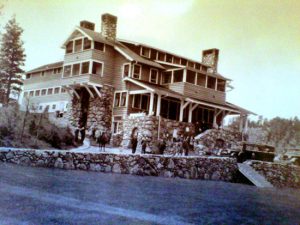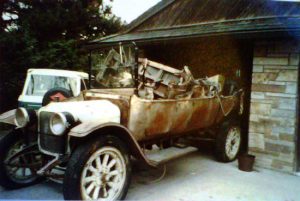Tour operator restoring 1920 bus
By Glenn Swain

Restoring a vintage 1920s tour bus has become a labor of love for Herman Jones, owner of Mount Rushmore Tours in Rapid City, South Dakota. Jones first had the idea to restore an old bus back in 1970. Through the years Jones had refurbished a 1932 Ford five-window vehicle with a rumble seat that had been given to him in the 1960s, but he really wanted to restore a bus. He had seen a number of photos of original 1920s rag-top, 15-seat passenger tour buses that hauled passengers in the nearby Black Hills region.
The vehicles had been owned by the Black Hills and Western Tour Company.
“I decided I wanted to find one of these tour buses, so I started looking,” Jones says. “I found one in Minnesota and they wanted $56,000 for it. I didn’t have that kind of money then. Besides, if I did I would have bought a big bus and made some money with it.”
In 2005 he finally located one in Harmony, PA. The price was right at $6,000 and he bought it sight unseen over the phone.
“It was obviously a basket case,” Jones says of the condition of the bus. “A father and son got started working on it and got the motor finished, but eventually they had it more torn apart than together.”
While Jones had visions of using the bus for specialized commercial uses, his insurance man suggested he be very careful in putting too much money into the restoration. Vintage vehicles can sometimes be nearly uninsurable.

“There’s no reason to have one of these if you can’t use them,” Jones says. “My approach is to try to get it up to DOT standards. We’ll be able to use it for specialty events like weddings, anniversaries and parties. It’ll be more of a fair-weather rig than an all-weather vehicle.”
The cost to get the old bus back on the road is not cheap.
“We’ll easily dump $80 to $100,000 into it,” Jones admits. “That’s to make it look like is just rolled off the showroom floor. I’m one of those guys who says if we’re going to do it let’s do it right. Let’s not poor boy it where you have to fix or repair the thing constantly for the next ten years.”
Jones did confirm the bus was used in the Black Hills in the 1920s. He found a physician in Loma Linda, CA whose hobby is, oddly, keeping track of serial numbers of antique tour buses.
Jones is currently working with a guy in Illinois to buy and ship a new chassis for the tour bus so it can meet specifications. When found, it will be a simple matter of transferring the body onto the new chassis.
Jones predicts the finished project is maybe a year away.
“It’s a labor of love. It’s not something that we’re doing to make lots of money off of. It’s something to give somebody that nostalgic appeal that wasn’t expected. We try to give people what we promised them, and more.” BR
